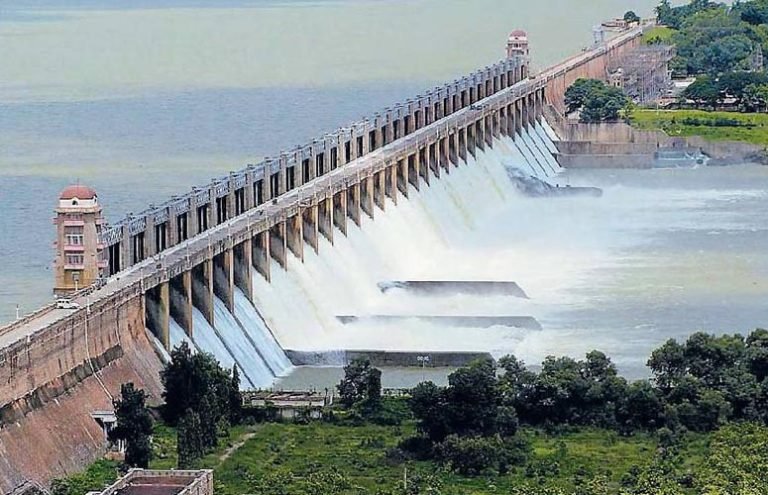In the heart of southern India’s Deccan Plateau lies a testament to human ingenuity and the harmonious coexistence of nature and infrastructure – the Tungabhadra Dam. This engineering marvel, a symbol of progress and resource management, stands as a beacon of India’s prowess in harnessing its natural resources for the betterment of its people.
The Tungabhadra Dam, situated on the Tungabhadra River that flows through the states of Karnataka and Andhra Pradesh, was conceived with a multi-faceted vision. Primarily aimed at mitigating the perennial problem of water scarcity in the region, the dam also plays a vital role in flood control, electricity generation, and irrigation.
Design and Construction
The dam’s construction, which began in 1949 and was completed in 1953, was a remarkable feat of engineering considering the technology available at the time. Designed as a multipurpose dam, its structure spans over 1,900 meters and reaches a towering height of about 49 meters. The architecture of the dam exhibits a blend of utilitarianism and aesthetics, combining the practical needs of water management with an elegant form that complements the surrounding landscape.
Hydroelectric Power Generation
One of the significant accomplishments of the Tungabhadra Dam is its role in electricity generation. The dam’s reservoir, with a vast capacity to store water, acts as a vital resource for the hydropower stations located downstream. The controlled release of water from the reservoir not only generates clean and renewable energy but also provides a means to regulate water flow, preventing flooding during heavy monsoons.
Fertile Fields and Bountiful Harvests
Agriculture, the backbone of India’s economy, benefits immensely from the Tungabhadra Dam’s existence. The stored water is channeled through an intricate network of canals and irrigation systems, turning vast stretches of arid land into fertile fields. This transformation has not only elevated the region’s agricultural productivity but has also improved the lives of countless farmers and their families.
Sustainable Development and Ecosystem Management
While the Tungabhadra Dam has undoubtedly brought prosperity to the region, its construction required careful consideration of the ecosystem’s impact. The dam’s planners and engineers worked to strike a balance between human needs and environmental sustainability. The dam’s reservoir, now a thriving habitat for various aquatic species, demonstrates the potential for engineering projects to coexist harmoniously with the environment.
Preserving Heritage and Enriching Tourism
Beyond its functional roles, the Tungabhadra Dam has also contributed to cultural and historical preservation. Its location near the UNESCO World Heritage site of Hampi, the erstwhile capital of the Vijayanagara Empire, has turned it into a gateway for tourists exploring this rich archaeological treasure trove. The dam’s tranquil waters juxtaposed against the ancient ruins create a picturesque scene that attracts visitors from all corners of the globe.
Conclusion
The Tungabhadra Dam stands tall as a reminder of human innovation and resilience. It narrates a tale of how engineering prowess, when combined with a holistic vision, can transform the landscape, uplift communities, and serve as a bridge between human aspirations and the natural world. As we admire this marvel of engineering, we are compelled to reflect on the significance of sustainable development and the imperative to embrace technology in ways that benefit both humanity and the environment.


